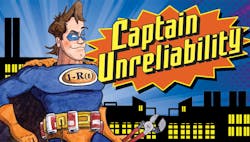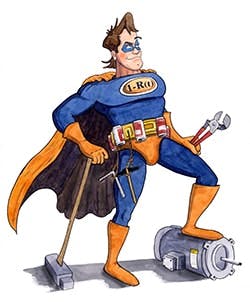How to develop a proper asset hierarchy
A foundational component of any successful CMMS or EAM system implementation is the structure of the asset hierarchy. A well-designed asset hierarchy allows you to track costs and failures at any level of the organization. It allows you to analyze costs by department, system, specific asset, and even component. It allows both operators and technicians to find and write work request or work orders more effectively. It allows you to plan, kit, and schedule work more efficiently.
Let me introduce you to a few best-in-class options for asset hierarchy structures:
The One Big Happy Family Hierarchy. This is a straight-line hierarchy. Only one parent, but thousands of children. The family tree in this hierarchy is so straight you could align fan sheaves with it. The CMMS user loves nothing more than scrolling an hour and a half to select the right asset. This hierarchy doesn’t fork and all, the assets are all related. The pump on your CIP skid and the exhaust fan in the warehouse are related in this structure. Why confuse things by creating systems or child assets when everything ultimately belongs to the company anyway.
The Dollar Value Hierarchy. The goal with the dollar value hierarchy is to capture as many assets as possible in your system so that you can brag about the number of assets you manage. In this hierarchy, you set the dollar amount as low as possible to what you call an asset. For example, if the threshold is a dollar, just picture the number of assets you can manage. Every fastener, nut, even toilet paper, for that matter, can be considered an asset. You could be running a single line plant with one machine but managing well over a million assets. Just picture how awesome it would be to tell others that you manage well over a million assets. You will be one of the most sought-after people in the industry!
The Too Smart For Our Own Good Hierarchy. Nothing is simpler or shows your creativeness like using smart numbering systems for your asset hierarchy. The brain power necessary to create a numbering convention that accounts for all locations, systems, asset classes, and number of assets in that class is astounding. Imaging when no one else can figure it out and comes to you for understanding. You will literally be “the go-to person” for how to number new assets. To be successful at this approach all you have to do is forget all about the pesky problem replacing an asset poses. Let someone else figure that out.
The Minimalist Hierarchy. Why spend time putting together a hierarchy with any level of complexity. Stick to systems only. Line 1 is good enough. Let all the work orders just go to Line 1. Better yet, don’t even put the assets in. Stick to locations only: production, offices, bathrooms, shipping/receiving. This makes it easy to select where the work order is charged to. No one is going to do any analysis on asset costs or parts used anyway, so why waste the time building in complications.
The Who Responds Hierarchy. Improving on the Minimalist approach, why not just list the types of issues as assets. Plumbing, automation, electrical, mechanical, HVAC, Utilities. In less than a dozen locations you can account for all work. Just like with the Minimalist approach, this approach takes advantage of the fact that no one is ever going to look into the data to get any better.
How to develop a proper asset hierarchy
3 steps for creating an environment of personal responsibility within your facility
50 ways to be the leader you know yourself to be while trampling everyone in your path
The Engineers Know Best Hierarchy. Why reinvent the wheel when you can just take the P&ID drawings and build your hierarchy accordingly? Nothing is easier than taking the numbers assigned by engineering drawings and applying them as your asset hierarchy. After all, it’s not like Pump 1 is used on more than one drawing, right? As an added benefit, you have the simplicity of asset naming such as PRV12, AV113, VAV35, TT20, etc. Everyone knows what these mean, so no need for asset descriptions.
As you can see, there are many ways to create a successful hierarchy. Pick the one that makes you the hero you know you were meant to be and run with it. ISO 55000 defines an asset as anything that adds actual or potential value to an organization, so don’t forget to list Captain Unreliability as one of your assets.
This story originally appeared in the April 2022 issue of Plant Services. Subscribe to Plant Services here.

